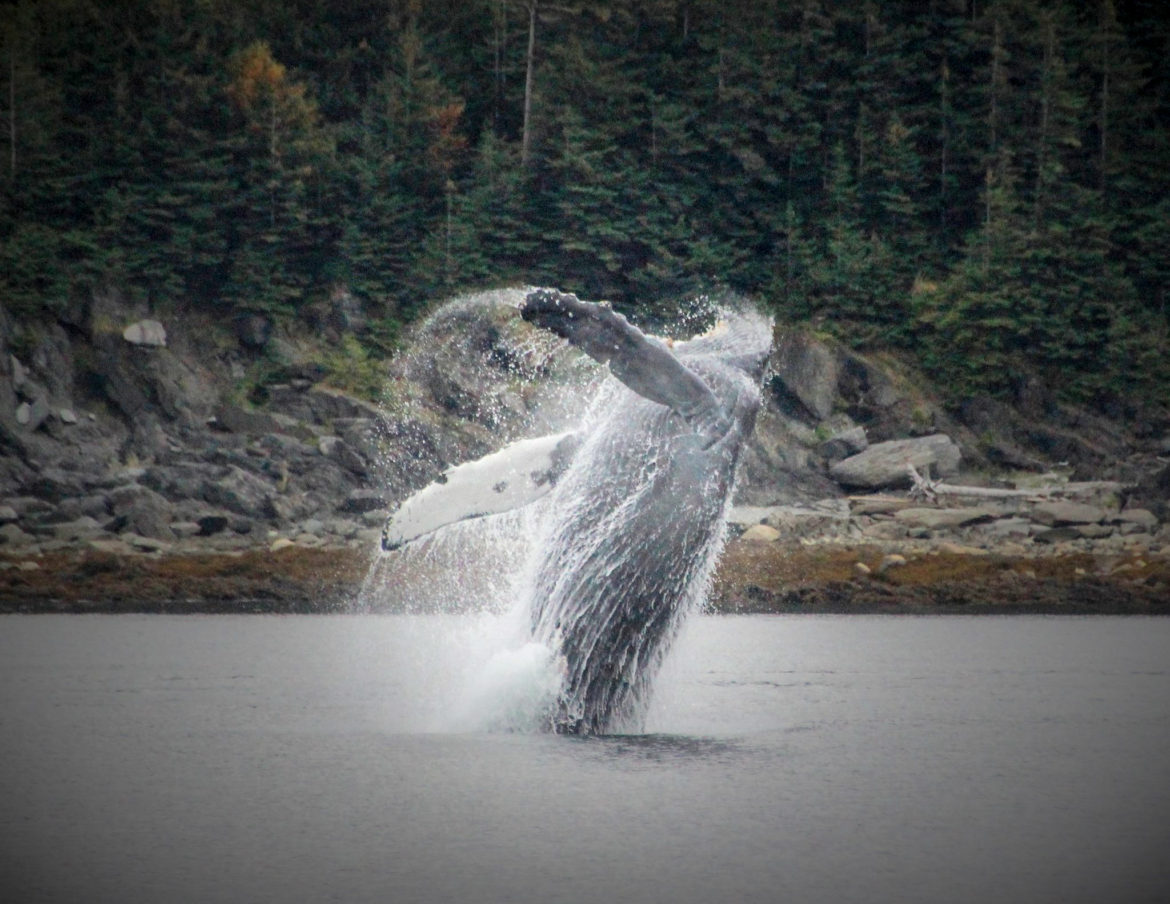The humpback whales of Alaska are one of the greatest highlights from all my travels to 7 continents. As a Spa Acupuncturist on cruise ships, I spent 3 summers in the pristine fiords of Alaska’s Inside Passage. Here, from late spring to early fall, almost 600 humpbacks congregate for their feeding season.
These extraordinary forces of nature were once on the brink of extinction. They stand as a beacon of hope on how we can make a difference and preserve nature and wildlife. Like other whales, the humpbacks were hunted by the whaling industry, reaching an all- time low in 1966, being decimated by 90%. Then, a moratorium on hunting whales helped restore their population to some 80,000 worldwide.
Humpbacks are migratory, moving up to 25,000 km (16,000 miles) each year.
They eat only during half the year in cool waters, like Alaska and Antarctica. In SE Alaska, they feed May through September, for up to 22 hours/day. Here, they build their fat reserves to carry them through the breeding season in warmer waters like Hawaii and Gulf of Mexico.
Humpbacks are baleens, feeding by straining through comb-like plates, trapping krill and small fish. They use a feeding strategy called bubble nets.
A group of whales encircle a school of small fish, while one whale goes underwater exhaling out their blowhole. This corrals the fish into a net of bubbles and keeps them from escaping. Even though I’ve seen many humpbacks, never have I witnessed this unique feeding team effort.
When watching the humpbacks, there are common things to look for in the distance. Whales are usually first spotted through their blow, rising up to 10 feet or 3 metres. If the sun is out, many of these whales blow a rainbow. Also, humpbacks often start a deep dive, by flipping their tale (flukes) in the air and remaining underwater up to 30 minutes. These flukes are the markers, that identify the whales by researchers.
Humpback Whales of Alaska – Hotspots at Juneau, Sitka & Ketchikan
I’ve seen countless humpbacks throughout the years in Alaska’s Inside Passage, while working as a Spa Acupuncturist on cruise ships. The Ship Captain often announces when whales are near the ship for us to observe. My best whale-watching excursions were with the company Allen Marine Tours in Juneau, Ketchikan & Sitka Bay. I found this company very respectful about the whales, keeping a healthy distance and providing informative presentations with their Naturalist.
In Juneau, I went on 2 amazing whale watching tours, seeing whales breach both times. The first time was surreal and even the guides were taken aback. Even though we kept a healthy distance, 2 humpbacks stayed close to our boat and breached bringing their entire bodies out of the water. It seemed like they were showing off for us, as it was so demonstrably awesome and close. I was thrilled to catch on my camera a full shot of a humpback very near my boat.
Related: Top Ten Things to Do in Spectacular Junea, Alaska
This year I went on another excursion with this company cruising past Mendenhall Glacier. There was a couple juvenile humpbacks repeatedly breaching. These were at a greater distance than my original tour. However, this time it was very repetitive as this one juvenile must have jumped more than 10 times. The guide was suggesting that the juvenile may be exercising or developing a physical strength.
In September, all Humpbacks of Inside Passage go to Sitka Bay, before migrating to Hawaii for the winter.
Another completely different whale watching experience with this same company happened in Sitka Bay in September. I discovered that in September most the humpbacks from Alaska’s Inside Passage meet here, before migrating back to Hawaii for the winter. It was unbelievable as there was whale blows and tails flipping everywhere. Only a picture can begin to explain this phenomenon. I was exhilarated beyond belief to be surrounded by whales in this beautiful bay with the mysterious Mt. Edgecumbe, a dormant volcano, as a backdrop.
Related: Pristine Sitka, Alaska’s Top Ten Attractions
Seeing these humpbacks in the winter in Hawaii remains on my bucket list.
Seeing the humpbacks in Alaska has given me so much appreciation for these baleen whales. Even though I enjoyed so many extraordinary opportunities to see the humpbacks in Alaska, it feels like I’m missing the other half of their story in Hawaii. I hear that they are much more active in the warm waters of Hawaii, where they mate and give birth to their calves. Therefore, seeing the humpbacks in Hawaii remains on my bucket list, to better know this species of the largest mammals on our planet.
Read More!
20 Wildlife Photos that Will Inspire You to Visit Amazing Alaska







